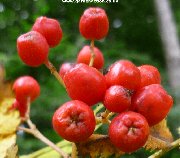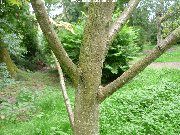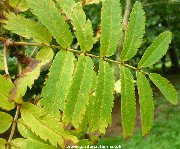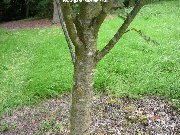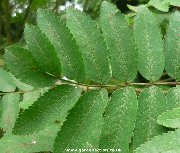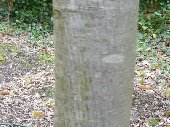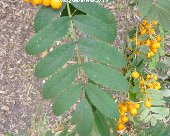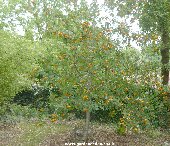Categories
Calendars
Guides
Reviews
Archive
Gallery
Articles
Ask Our Gardening Expert
Identify the Sargent's Rowan (sorbus hupehensis)
An ideal tree
for the medium or large garden. The Rowan tree takes 40 years to reach 15m (50ft) high and
9m (30ft) in diameter. CLICK ANY PICTURE ON THIS PAGE TO ENLARGE IT Rowan or Mountain Ash (sorbus
aucuparia)
The leaves are shown on the left (click the picture to enlarge). As the leaves emerge
they are a mid green colour. In early to mid autumn / fall the leaves turn yellow to
orange and fall off.
Each stem has around 11 to 15 individual leaves which are toothed along the edges except
at the base where they are untoothed.
The bark on young trees is a shiny grey colour ageing to a brown-grey colour. The
texture of the bark is generally smooth, especially on younger trees.
The width of the trunk restricts the size of wood that can be taken form a Rowan. But it
is very hard and often used for small items such as garden tool handles which require a
high breaking point.
The fruits appear in late summer, and are initially green, they quickly ripen to a
bright red in very early September. Birds love them and often trees are stripped of
their ripening fruit within a few days, especially if the weather turns cold.
Each fruit is about 8mm in diameter and they appear in large clusters of 20 or more
berries. The fruits are edible, although they are extremely bitter until frosted or
over-ripe.
PICTURE OF FLOWERS COMING SOON
The flowers appear in mid-May as sprays of cream to white between 10 to 15cm (4 to 6in)
wide. Insects pollinate the flowers. They have a slightly sweet scent.
There is very little to distinguish the flowers of sorbus aucuparia from other species
of Rowans. As well as sorbus aucuparia there are many variants each with their
own differences in appearance. Below we list those for which we have pictures.
Sorbus aucuparia 'Beissneri' Sorbus aucuparia 'Sheerwater Seedling' Sorbus aucuparia 'Fructo Luteo'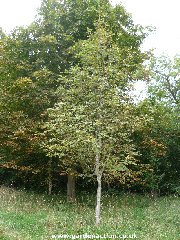
sorbus aucuparia, click to enlarge
The Rowan tree is native to the majority of Europe (the far south
excluded), North Africa and Asia Minor. Because it is such an attractive tree it is planted
in all the temperate regions of world in parks, gardens and arboretum. 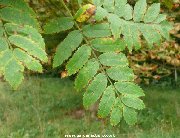
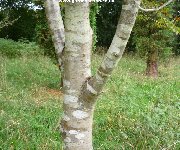
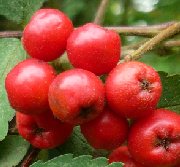
This cultivar is frequently used in place of the Common Rowan.
'Sheerwater Seedling' is frequently found lining streets because it has a very upright shape
and is comparatively narrow. Spring flowers, autumn red berries and pleasant foliage which
turns orange / red make this ideal for gardens as well.
Reaching an eventual height of 8m (25ft) this is an excellent garden tree. The berries
are yellow, turning a light orange. The "head" of the tree is wider compared to many sorbus
aucuparia cultivars.
